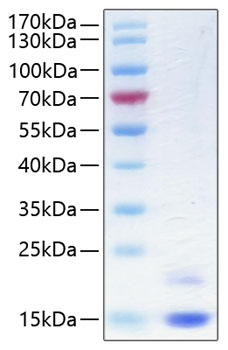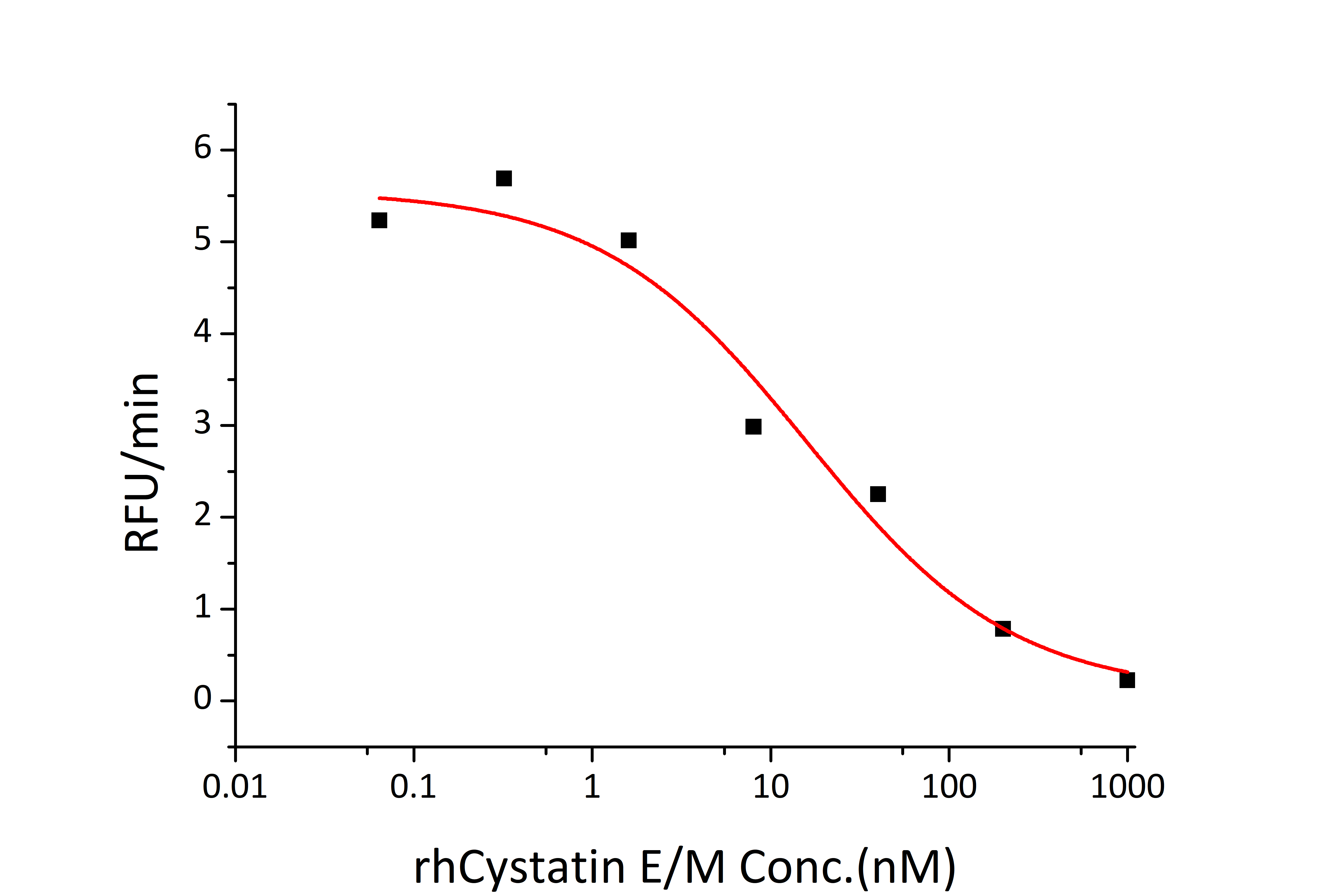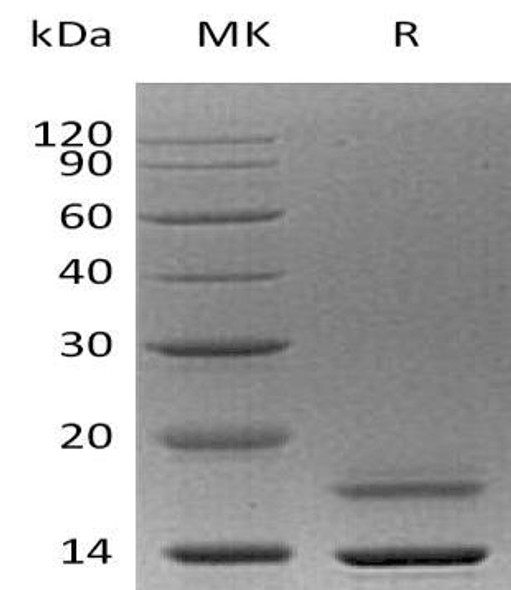Description
Recombinant Human Cystatin-M/CST6 Protein
The Recombinant Human Cystatin-M/CST6 Protein is a biologically active recombinant protein that plays a significant role in various cellular processes and signaling pathways in human biology. This protein is widely employed in immunological research, cell biology studies, protein-protein interaction analyses, and therapeutic development, providing researchers with a reliable tool for investigating Cystatin-M/CST6 function and its implications in health and disease.
This product (SKU: RPCB0319) is produced using HEK293 cells and features a C-His tag for convenient detection and purification. The protein exhibits a calculated molecular weight of 14.43 kDa with an observed molecular weight of 15, 17 kDa under denaturing conditions, achieving ≥ 95 % as determined by SDS-PAGE.. Functional bioactivity has been validated through rigorous quality control assays, confirming its suitability for demanding research applications.
Key Features
| High Purity by Affinity Chromatography | |
| Mammalian & Bacterial Expression Systems | |
| High lot-to-lot consistency via strict QC |
| Product Name: | Recombinant Human Cystatin-M/CST6 Protein |
| SKU: | RPCB0319 |
| Size: | 10 μg , 20 μg , 50 μg |
| Reactivity: | Human |
| Synonyms: | CST6 |
| Tag: | C-His |
| Expression Host: | HEK293 cells |
| Calculated MW: | 14.43 kDa |
| Observed MW: | 15, 17 kDa |
| Gene ID: | 1474 |
| Protein Description: | High quality, high purity and low endotoxin recombinant Recombinant Human Cystatin-M/CST6 Protein (RPCB0319), tested reactivity in HEK293 cells and has been validated in SDS-PAGE.100% guaranteed. |
| Endotoxin: | < 0.01 EU/μg of the protein by LAL method |
| Purity: | ≥ 95 % as determined by SDS-PAGE. |
| Formulation: | Lyophilized from a 0.22 μm filtered solution of PBS, pH 7.4.Contact us for customized product form or formulation. |
| Bio-Activity: | Measured by its ability to inhibit papain cleavage of a fluorogenic peptide substrate Z-FR-AMC. The IC50 value is approximately 16 nM. |
| Reconstitution: | Centrifuge the vial before opening. Reconstitute to a concentration of 0.1-0.5 mg/mL in sterile distilled water. Avoid vortex or vigorously pipetting the protein. For long term storage, it is recommended to add a carrier protein or stablizer (e.g. 0.1% BSA, 5% HSA, 10% FBS or 5% Trehalose), and aliquot the reconstituted protein solution to minimize free-thaw cycles. |
| Storage: | Store at -20℃.Store the lyophilized protein at -20℃ to -80 ℃ up to 1 year from the date of receipt. After reconstitution, the protein solution is stable at -20℃ for 3 months, at 2-8℃ for up to 1 week. |
Cystatin E/M encoded by the CST6 gene is a member of family 2 of the cystatin superfamily. It inhibits papain and cathepsin B, two of the cysteine proteases. Its mRNA was found in many tissues by the two groups who did initial cloning. However, its protein was found only in skin and sweat glands by a third group. In addition to being a cysteine protease inhibitor, cystatin E/M is also a substrate for transglutaminases. It is required for viability and for correct formation of cornified layers in the epidermis and hair follicles, as ichq mice, with a null mutation in the cystatin E/M gene, have defects in epidermal cornification and die between 5 and 12 days of age. Cystatin E/M expression and function may not be limited to cutaneous epithelia. For example, it is found in rat brain and is induced during neuronal cell differentiation.






